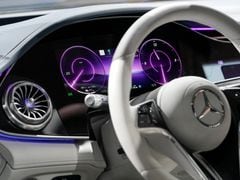Passenger Vehicles to Account For Only 5% of EV Sales By 2030: Study

- EV sales expected to be dominated by 2 wheelers
- EVs to account for 10 per cent of PV sales by 2030
- Only 3-wheeler segment likely to hit EV adoption targets set in FAME II
In a study undertaken by consultancy firm Arthur D Little, it was found that electric vehicle sales in India by 2030 would only account for 30 per cent of the overall number. The study further revealed that electric passenger vehicles would be the lowest contributor with an expected share of just 5 per cent of the overall EV sales by the end of the decade – 10 per cent of the total passenger vehicles sold. The report cited that the majority of the growth would come in the form of electric two- and three-wheelers which have so far been the segments seeing the largest sales and adoption of electric mobility. Electric three-wheelers are expected to constitute over 90 per cent of overall three-wheeler sales by 2030 with electric scooter and motorcycle sales said to account for up to 35 per cent of overall two-wheeler sales.
The report cited several reasons for the low EV adoption in the passenger car segment including the lack of infrastructure, low buyer confidence, a lack of choice in the market and product safety mishaps. The study also cited costs as a major contributor to the low adoption of electric passenger cars, with models even when domestically manufactured costing a notable premium over their standard counterparts. Additionally a significant number of EVs in the segment were fully imported models.

The study estimated EV sales will cross 30 per cent of overall sales by 2030 though it would primarily be driven by two-wheelers.
The study estimated that sales of electric vehicles in the country would leapfrog to the 10 million unit mark by the end of the decade compared to 0.4 million units in 2021. The primary driver for the growth though is expected to be the two-wheeler industry with the rest of the segments accounting for only about 13 per cent of overall EV sales. The firm estimated that outside of three-wheelers none of the segments would achieve the EV adoption targets set by the government under the FAME II scheme in 2030
The study also recommended several measures to help push the growth of EVs in the domestic markets such as increased focus on product development, improvements to the power generation grid and charging infrastructure, increased localisation of components for electric vehicles and measures from the government to further incentivise and push for adoption of EVs. The study also highlighted measures put into place by the government to push electrification including reduced GST on EVs and chargers and the upcoming battery swapping policy.

Arthur D Little estimates that cost of ownership of EVs could further reduce in the coming years which could help demand
In a global comparison of EV readiness, India ranked 11 out of 15 countries involved in the study. Norway lead the charge in setting the study benchmark based on the criteria including customers readiness, infrastructure readiness and government readiness. India was classified as a Starter country with key challenges to solve including costs and EV-conducive infrastructure. India had a government that was ready to push for EV adoption but lacked the infrastructure to support the growth.
Barnik Maitra, Managing Partner & Chief Executive Officer, India & South Asia, Arthur D. Little, said "While studying global EV markets, we found that market readiness and EV adoption are driven by different factors in different regions. In some markets, environmental friendliness is the key, while in others, it's the cost of the EV. Many countries, especially those in our Starter group including India, primarily focus on cost.”
The studies estimated that with global battery prices expected to fall in the coming years India could see EVs becoming more affordable which could boost uptake. The company said that while the current estimated cost of ownership over 1.5 lakh km for EVs stood at roughly 8 per cent lower than a conventional internal combustion engine car it could increase to as much as 30 per cent by the end of the decade.
Trending News
 1 min readYamaha YZF-R2 Name Trademarked In India
1 min readYamaha YZF-R2 Name Trademarked In India 1 min readTriumph Tracker 400: In Pictures
1 min readTriumph Tracker 400: In Pictures
Latest News
 car&bike Team | Dec 19, 2025Next-gen Audi Q3 Spied In India Ahead Of Launch In 2026Third-gen Q3 made its global debut in mid-2025, getting notable tech upgrades and electrified powertrain options.2 mins read
car&bike Team | Dec 19, 2025Next-gen Audi Q3 Spied In India Ahead Of Launch In 2026Third-gen Q3 made its global debut in mid-2025, getting notable tech upgrades and electrified powertrain options.2 mins read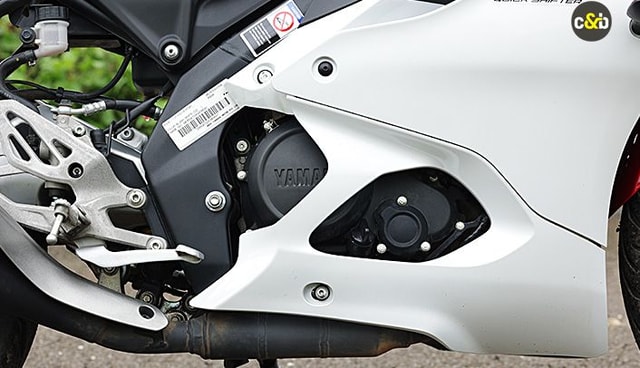 car&bike Team | Dec 19, 2025Yamaha YZF-R2 Name Trademarked In IndiaThe Yamaha R15, one of Yamaha India’s most popular motorcycle models, is likely to continue, even when the R2 finally makes it debut.1 min read
car&bike Team | Dec 19, 2025Yamaha YZF-R2 Name Trademarked In IndiaThe Yamaha R15, one of Yamaha India’s most popular motorcycle models, is likely to continue, even when the R2 finally makes it debut.1 min read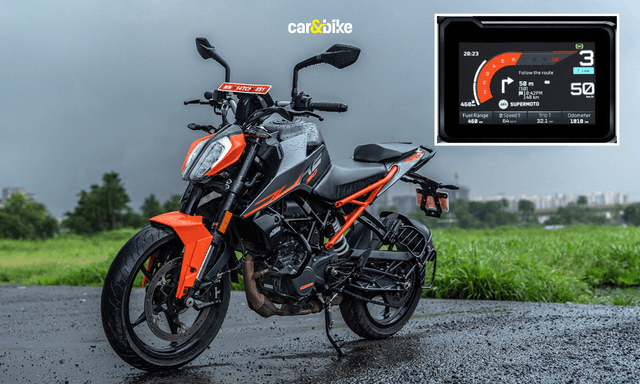 car&bike Team | Dec 18, 2025KTM 160 Duke With TFT Dash launched At Rs 1.79 LakhThe 5-inch colour TFT dash is borrowed from the 390 Duke and is shared across the brand’s sub-400cc lineup.2 mins read
car&bike Team | Dec 18, 2025KTM 160 Duke With TFT Dash launched At Rs 1.79 LakhThe 5-inch colour TFT dash is borrowed from the 390 Duke and is shared across the brand’s sub-400cc lineup.2 mins read car&bike Team | Dec 18, 2025Lamborghini Urus Seized By Cops Following Viral Clip Of Speeding On Bandra-Worli Sea LinkThe car was seized after a video of it allegedly overspeeding on the Bandra–Worli Sea Link, where the speed limit is capped at 80 kmph, went viral.2 mins read
car&bike Team | Dec 18, 2025Lamborghini Urus Seized By Cops Following Viral Clip Of Speeding On Bandra-Worli Sea LinkThe car was seized after a video of it allegedly overspeeding on the Bandra–Worli Sea Link, where the speed limit is capped at 80 kmph, went viral.2 mins read car&bike Team | Dec 18, 20252025 Ducati XDiavel V4 India Launch Details RevealedThe new Ducati XDiavel V4 will be launched towards the end of December 2025 and will sit alongside the standard Ducati Diavel V4.3 mins read
car&bike Team | Dec 18, 20252025 Ducati XDiavel V4 India Launch Details RevealedThe new Ducati XDiavel V4 will be launched towards the end of December 2025 and will sit alongside the standard Ducati Diavel V4.3 mins read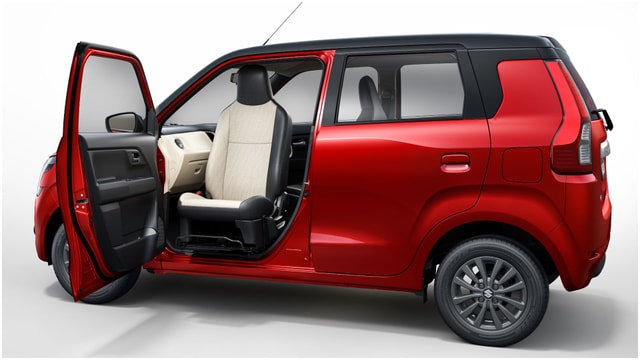 Amaan Ahmed | Dec 18, 2025Maruti WagonR Swivel Front Seat Kit Launched: Check Price, AvailabilityBangalore-based startup TrueAssist Technology Private Limited has developed a mechanism that allows the front passenger seat to swivel outwards, in a bid to improve accessibility for the aged and persons with disabilities.2 mins read
Amaan Ahmed | Dec 18, 2025Maruti WagonR Swivel Front Seat Kit Launched: Check Price, AvailabilityBangalore-based startup TrueAssist Technology Private Limited has developed a mechanism that allows the front passenger seat to swivel outwards, in a bid to improve accessibility for the aged and persons with disabilities.2 mins read
 Bilal Firfiray | Dec 19, 2025Maruti Suzuki e-Vitara Review: Worth The Wait?After a long wait, the first-ever electric Maruti Suzuki is here. It’s the e-Vitara, and it comes with a few promises. But arriving this late, is it worth the wait? Or is it a case of too little, too late?9 mins read
Bilal Firfiray | Dec 19, 2025Maruti Suzuki e-Vitara Review: Worth The Wait?After a long wait, the first-ever electric Maruti Suzuki is here. It’s the e-Vitara, and it comes with a few promises. But arriving this late, is it worth the wait? Or is it a case of too little, too late?9 mins read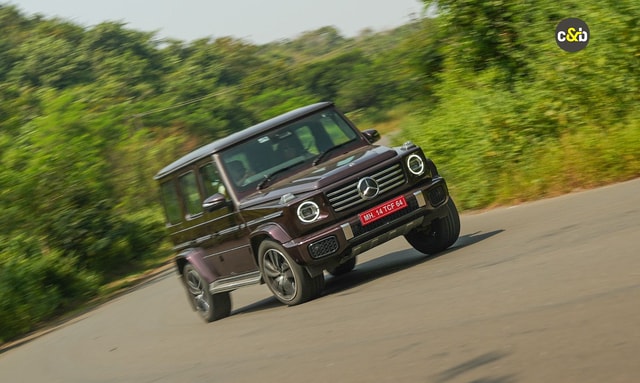 Bilal Firfiray | Dec 18, 2025Mercedes-Benz G450d: The Subtle Power of EvolutionThe Mercedes-Benz G 450d evolves subtly with more power, improved efficiency, and modern tech, while staying true to the timeless G-Class design. And character.4 mins read
Bilal Firfiray | Dec 18, 2025Mercedes-Benz G450d: The Subtle Power of EvolutionThe Mercedes-Benz G 450d evolves subtly with more power, improved efficiency, and modern tech, while staying true to the timeless G-Class design. And character.4 mins read Janak Sorap | Dec 11, 2025Harley-Davidson X440 T First Ride Review: Smarter and SharperHarley-Davidson has taken the X440 and given it a more focused and engaging twist. The result is the X440 T—essentially the same platform but updated in areas that give the motorcycle more appeal and riders more thrill.5 mins read
Janak Sorap | Dec 11, 2025Harley-Davidson X440 T First Ride Review: Smarter and SharperHarley-Davidson has taken the X440 and given it a more focused and engaging twist. The result is the X440 T—essentially the same platform but updated in areas that give the motorcycle more appeal and riders more thrill.5 mins read Shams Raza Naqvi | Dec 10, 20252025 Mini Cooper Convertible Review: More Colour On Indian RoadsThe updated Mini Cooper Convertible is set to be launched in the Indian market in the next few days. We drive it around Jaisalmer for a quick review.5 mins read
Shams Raza Naqvi | Dec 10, 20252025 Mini Cooper Convertible Review: More Colour On Indian RoadsThe updated Mini Cooper Convertible is set to be launched in the Indian market in the next few days. We drive it around Jaisalmer for a quick review.5 mins read Bilal Firfiray | Dec 8, 2025Tata Sierra Review: India’s New Favourite?Marking its return after a few decades, the reborn Sierra has made everyone sit up and take notice. But is it worth the hype?10 mins read
Bilal Firfiray | Dec 8, 2025Tata Sierra Review: India’s New Favourite?Marking its return after a few decades, the reborn Sierra has made everyone sit up and take notice. But is it worth the hype?10 mins read


